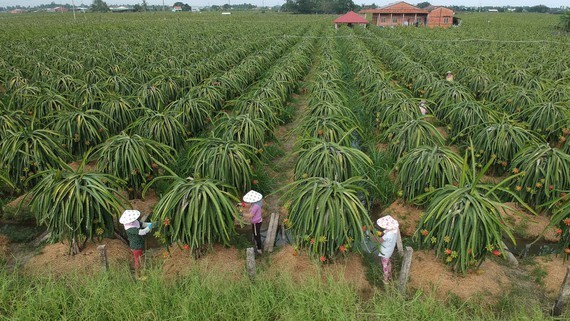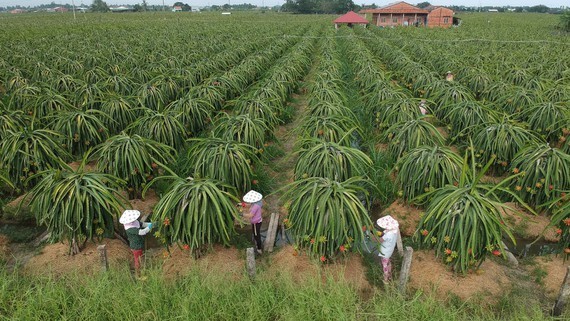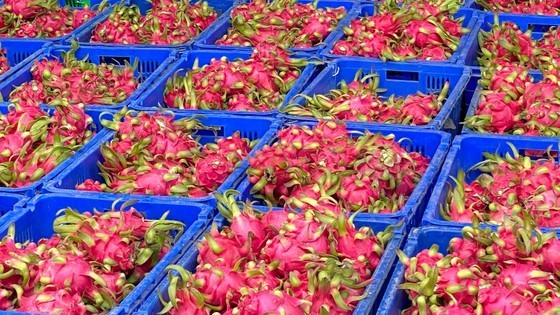
 A red dragon fruit farm in Long An Province
A red dragon fruit farm in Long An Province
At present, only produce from areas and facilities with a PUC issued by can be exported to countries and regions that have signed trade agreements with Vietnam such as the USA, the EU, Australia, Japan, Korea, and China.
In fact, the Ministry of Agriculture and Rural Development has included Article 64 in the Law on Crop Production regarding the management of PUC, and assigned the Vietnam PPD to develop domestic standards on monitoring areas with PUCs.
In 2020, the National Office of Intellectual Property of Vietnam has issued a decision to grant geographical indication certificates for many domestic agricultural products, which are also registered for trademark in some foreign countries.
The inspection of farmyards and packing facilities with already-issued PUCs, as well as sending requests for new PUCs are mainly carried out by local inspectors.
However, the inspection and supervision of farmyards and packing facilities with PUCs have been very lax in some localities. What’s more, there have been cases of the exporting companies using incorrect codes or stealing other companies’ code to export their goods.
A notable example was a report from the General Administration of Customs of China in June 2020 about roughly 3,300 tons of mango exported to China in 2019 and 2020 violating multiple plant safety regulations.
As a result, relevant Chinese agencies requested to suspend the export of mango from 12 Vietnamese farmyards and 18 packaging facilities to investigate and come up with appropriate remedies.
Although the number of facilities suspended only amounts for 0.43% of the relevant total export volume, this served as a wake-up call for Vietnamese local authorities to pull themselves together to maintain the reputation of Vietnam’s agricultural exports in the global market.
The overall goal of the allocation, management and monitoring of a PUC-issued planting area is to ensure traceability back to the original source to determine the pest control methods and fertilizers.
Especially, demanding markets such as the EU, the US, New Zealand, and South Korea have specific regulations shown in documents on import conditions or implementation plans for each type of agricultural product. Up to now, 998 PUCs have been granted to Vietnam by the above markets.
China in particular receives up to 3-4 million tons of fruits per year, so any legitimate export must come from orchards and packaging facilities with PUCs issued by the Ministry of Agriculture and Rural Development of Vietnam and approved by the General Administration of Customs of China, applicable from 2019.
As of August 2020, 47 provinces have been granted 1,735 PUCs for over 180,000 hectares of orchard with 9 types of fruits, and 1,832 PUCs for official export packing facilities.
 Red dragon fruits assigned for export in Long An Province
Red dragon fruits assigned for export in Long An Province
In other news, Deputy Prime Minister Trinh Dinh Dung has just signed a decision approving the National Industrial Promotion Program for the period of 2021-2025. The program aims to support 350 rural establishments to apply for trademarks, among other industrial applications.
According to the Department of Crop Production (under the Ministry of Agriculture and Rural Development), the Mekong Delta provinces have more than 362,000 hectares of fruit trees, accounting for more than 34% of the total national area. These provinces alone provide the market with over 4 million tons of fruit for export and domestic consumption each year.
























